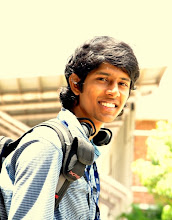PASSAGE I
The union government’s present position vis-à-vis the upcoming United Nations conference on racial and related discrimination world-wide seems to be the following: discuss race please, not caste; caste is our very own and not at all as bad as you think. The gross hypocrisy of that position has been lucidly underscored by Kancha Ilaiah. Explicitly, the world community is to be cheated out of considering the matter on the technicality that caste is not, as a concept, tantamount to a racial category. Internally, however, allowing the issue to be put on agenda at the said conference would, we are patriotically admonished, damage the country’s image. Somehow, India’s virtual beliefs elbow out concrete actualities. Inverted representations, as we know, have often been deployed in human histories as balm for the forsaken—religion being the most persistent of such inversions. Yet, we would humbly submit that if globalising our markets are thought good for the ‘national’ pocket, globalising our social inequities might not be so bad for the mass of our people. After all, racism was as uniquely institutionalised in South Africa as caste discrimination has been within our society; why then can’t we permit the world community to express itself on the latter with a fraction of the zeal with which, through the years, we pronounced on the former?
As to the technicality about whether or not caste is admissible into the agenda about race (that the conference is also about ‘related discriminations’ tends to be forgotten), a reputed sociologist has recently argued that where race is a ‘biological’ category caste is a ‘social’ one. Having earlier fiercely opposed implementation of the Mandal Commission Report, the said sociologist is at least to be complimented now for admitting, however tangentially, that caste discrimination is a reality, although, in his view, incompatible with racial discrimination. One would like quickly to offer the hypothesis that biology, in important ways that affect the lives of many millions, is in itself perhaps a social construction. But let us look at the matter in another way.
If it is agreed—as per the position today at which anthropological and allied scientific determinations rest—that the entire race of homo sapiens derived from an originary black African female (called ‘Eve’) then one is hard put to understand how, on some subsequent ground, ontological distinctions are to be drawn either between races or castes. Let us also underline the distinction between the supposition that we are all god’s children and the rather more substantiated argument about our descent from ‘Eve’, lest both positions are thought to be equally diversionary. It then stands to reason that all subsequent distinctions are, in modern parlance, ‘constructed’ ones, and, like all ideological constructions, attributable to changing equations between knowledge and power among human communities through contested histories here, there, and elsewhere.
This line of thought receives, thankfully, extremely consequential buttress from the findings of the Human Genome project. Contrary to earlier (chiefly 19th century colonial) persuasions on the subject of race, as well as, one might add, the somewhat infamous Jensen offerings in the 20th century from America, those findings deny genetic difference between ‘races’. If anything, they suggest that environmental factors impinge on gene-function, as a dialectic seems to unfold between nature and culture. It would thus seem that ’biology’ as the constitution of pigmentation enters the picture first only as a part of that dialectic. Taken together, the originary mother stipulation and the Genome findings ought indeed to furnish ground for human equality across the board, as well as yield policy initiatives towards equitable material dispensations aimed at building a global order where, in Hegel’s stirring formulation, only the rational constitutes the right. Such, sadly, is not the case as everyday fresh arbitrary grounds for discrimination are constructed in the interests of sectional dominance.
1. When the author writes ‘globalising our social inequities’, the reference is to:
1) going beyond an internal deliberation on social inequity.
2) dealing with internal poverty through the economic benefits of globalisation.
3) going beyond an internal delimitation of social inequity.
4) achieving disadvantaged people’s empowerment, globally.
2. According to the author, ‘inverted representations as balm for the forsaken’:
1) is good for the forsaken and often deployed in human histories.
2) is good for the forsaken, but not often deployed historically for the oppressed.
3) occurs often as a means of keeping people oppressed.
4) occurs often to invert the status quo.
3. Based on the passage, which broad areas unambiguously fall under the purview of the UN conference being discussed?
A Racial prejudice.
B Racial pride.
C Discrimination, racial or otherwise.
D Caste-related discrimination.
E Race-related discrimination.
1) A, E
2) C, E
3) A, C, E
4) B, C, D
4. According to the author, the sociologist who argued that race is a ‘biological’ category and caste is a ‘social’ one:
1) generally shares the same orientation as the author’s on many of the central issues discussed.
2) tangentially admits to the existence of ‘caste’ as a category.
3) admits the incompatibility between the people of different race and caste.
4) admits indirectly that both caste-based prejudice and racial discrimination exist.
5. An important message in the passage, if one accepts a dialectic between nature and culture, is that:
1) the results of the Human Genome Project reinforces racial differences.
2) race is at least partially a social construct.
3) discrimination is at least partially a social construct.
4) caste is at least partially a social construct.

Hi Srikeit... This is my take...
ReplyDelete1.3
2.1
3.1
4.4
5.1
Plz give the answers and explanations soon.. :) .. i need the explanations.. i know i suck in RC's :) :)